From History Major to Curator of Three Major Exhibitions
If alumna Lisa Minardi’s spring fancy turns to fraktur, not baseball, it is because she has her own triple play: she was involved in curating three major Pennsylvania German folk art exhibitions all on view now.
In an unprecedented coincidence, three major Delaware Valley institutions are celebrating a type of Pennsylvania German folk art known as fraktur, a boldly-colored manuscript tradition introduced to America by German immigrants who settled in Pennsylvania beginning in 1683.
First, there is Winterthur’s A Colorful Folk: Pennsylvania Germans and the Art of Everyday Life, open through Jan. 3, 2016. Minardi is the curator of the exhibition and the author of the accompanying catalogue.
Minardi is guest curator of the Free Library of Philadelphia’s exhibition Quill & Brush: Pennsylvania German Fraktur and Material Culture,” on view until July 18.
She is also a consulting curator for the Philadelphia Museum of Art’s exhibition Drawn with Spirit: Pennsylvania German Fraktur from the Joan and Victor Johnson Collection, and the author of the accompanying catalogue published by Yale University Press, on view until April 26 at the Ruth and Raymond G. Perelman Building.
“It’s a rather extraordinary moment,” she says of the concurrent shows. She also just co-organized and participated in a major academic conference, “Fraktur and the Everyday Lives of Germans in Pennsylvania and the Atlantic World, 1683–1850,” which included an international roster of participants.
And by the way, she is completing her Ph.D.
Visitors to the three fraktur exhibits will see a wide variety of Pennsylvania German folk art, as the shows are complimentary, and cover different examples of the works, By visiting all three exhibits, “one gets a fuller, richer story,” she says. “Everyone can appreciate the work of folk artists, the whimsy of the design, the tulips, hearts, angels, eagles….and above all the bold colors and endless creativity.”
The timing of the three exhibitions was mostly serendipity, she said. In 2007-2009, Minardi helped re-catalogue the Free Library of Philadelphia’s fraktur collection, which, with more than 1,300 examples, is one of the largest in the country. This resulted in an online database and now two exhibitions devoted to fraktur: Quill & Brush: Pennsylvania German Fraktur and Material Culture, a historic exhibition featuring original fraktur works along with Pennsylvania German artifacts, manuscripts, and ephemera, and Word & Image: Contemporary Artists Connect to Fraktur, a contemporary exhibition featuring the work of seven international artists. Quill & Brush, curated by Minardi, is on display in the William B. Dietrich Gallery located within the Rare Book Department.
The 2004 alumna is an assistant curator at Winterthur Museum in Wilmington, Del., and is internationally recognized for her expertise in Pennsylvania German art and culture.
Three years ago, because of her expertise and reputation as a meticulous scholar, Philadelphia collectors Joan and Victor Johnson approached her about writing a catalogue of their fraktur collection, which includes nearly 250 examples. Minardi also served as consulting curator for the associated exhibition at the Philadelphia Museum of Art, organized to celebrate the Johnsons’ promised gift of their fraktur collection to the museum. Works in the show include examples made in numerous southeastern Pennsylvania counties including Adams, Berks, Bucks, Cumberland, Lancaster, Lebanon, Lehigh, Montgomery, Northampton, and York.
Then, in early 2014, Winterthur acquired a large collection from the estate of the late Pastor Frederick S. Weiser, a legendary scholar and collector of Pennsylvania German folk art. When a gap in the museum’s exhibition schedule developed for 2015, Minardi was asked to organize an exhibition featuring the Weiser collection. The Winterthur exhibit is a comprehensive exploration of Pennsylvania German folk art, including textiles, pottery, metalwork, and furniture, and includes wrought-iron weathervanes made in 1743 and decorated with tulips, loaned by Augustus Lutheran Church in Trappe, Pa.
Minardi’s interest in fraktur dates to her childhood when she attended a summer day camp at the local Peter Wentz Farmstead and fell in love with Pennsylvania German art. At Ursinus, she was a history major and the first Museum Studies major, an independent major. As a student, she applied for a job at the Berman Museum not knowing it has a collection of Pennsylvania German folk art. Hired as a curatorial assistant at the Berman, she cataloged and translated the fraktur in the museum’s collection. The Berman Museum holds nearly 130 fraktur, including birth and baptismal certificates, religious texts, and writing samples, both freehand and printed examples.
“The Berman was formative in my decision to pursue a museum career,” she notes. Minardi returned to the Berman as a guest curator in 2011 for the exhibition, Pastors and Patriots: The Muhlenberg Family of Pennsylvania, and wrote a book to accompany the exhibit. The project grew out of a study of the Muhlenberg family which Minardi undertook as the distinguished honors thesis for her history major; a catalogue of the Berman’s fraktur collection was the distinguished honors thesis for her Museum Studies major.
She earned a master’s degree in Early American Culture from the University of Delaware in a joint program with Winterthur Museum. Hired by Winterthur in 2006, Minardi helped organized the museum’s 2011 exhibition Paint, Pattern & People: Furniture of Southeastern Pennsylvania, 1725–1850 and co-authored the accompanying book of the same name.
She has also been president for many years of The Speaker’s House, a non-profit organization dedicated to restoring the Trappe, Pa. home of Frederick Muhlenberg, first Speaker of the U.S. House. She now serves as executive director, a volunteer position. Minardi joined the organization as an Ursinus student in 2003, when she learned the house was threatened with demolition, and raised money to save the house. She now oversees the restoration of the 1763 house, which served as an Ursinus dormitory from 1924 to 1944. Frederick Muhlenberg is also a major focus of her dissertation, a study of German Lutherans in colonial Philadelphia, in the History of American Civilization program at the University of Delaware.
